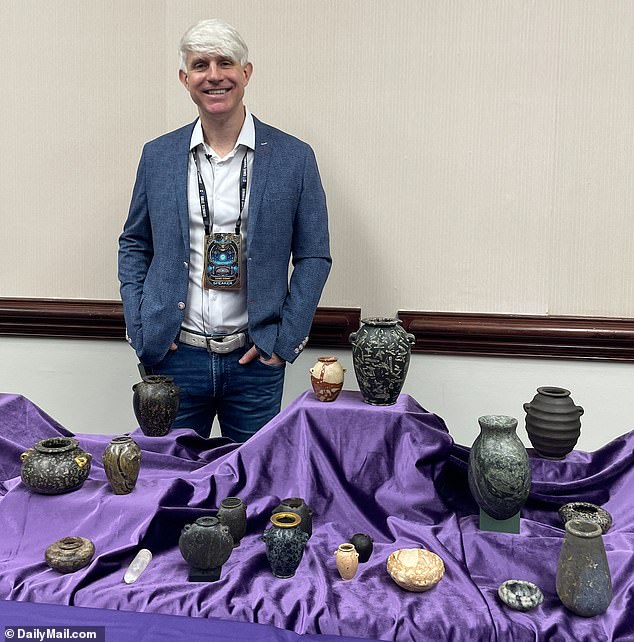
"Ancient Egyptian Relics Rewrite History After 5000 Years in Shadows"
Florida Billionaire Claims Ancient Egyptian Vases Hint at Lost Technology
[IMAGE: Matt Beall presenting his vase collection at the Cosmic Summit]
Matt Beall, CEO of Bealls Stores, showcases his private collection of ancient Egyptian vases, which he believes challenge mainstream historical narratives.
Florida billionaire Matt Beall has amassed a private collection of 85 ancient Egyptian stone vases, arguing their precision suggests advanced, unexplained tools like lathes were used over 5,000 years ago. Carved from granite, limestone, and quartz, the vessels feature flawless symmetry, hollowed interiors, and bases accurate to within thousandths of an inch. “The idea that copper chisels alone made these is ridiculous,” Beall stated at North Carolina’s Cosmic Summit, a forum for alternative history. “Lathes were involved—but where are the tools?”
[IMAGE: Close-up of intricately carved vase handles and hollowed interiors]
The vases, shaped from single stone blocks, exhibit precision rivaling modern machining.
Over 40,000 similar artifacts, some dating to 4000 BC, have been found in sites like the Step Pyramid of Djoser. Used for oils, perfumes, or funerary rites, they represent some of Egypt’s oldest relics. While scholars attribute their craftsmanship to skilled artisans, Beall cites 1883 findings by archaeologist Flinders Petrie, who speculated rotating tools created their smooth curves.
[IMAGE: Predynastic stone vases displayed in a museum setting]
Examples of 6,000-year-old stone vases from Egypt’s Predynastic era.
Teaming with engineers and the Artifact Research Foundation, Beall employed CT scans and 3D modeling to analyze 30 vases. One granite piece showed less than 0.001-inch variation in roundness. A study by Dr. Max Fomitchev-Zamilov (Moscow Institute of Electronic Technology) noted 15-micron precision—10 times finer than modern machine-carved vessels. However, these findings await peer review.
[IMAGE: CT scan cross-section highlighting a vase’s uniform thickness]
Scans reveal astonishing consistency in wall thickness and shape.
The mystery deepens with vases featuring openings narrower than a finger. “How did they hollow these without advanced drills?” Beall asks. Internal tool marks suggest sharp, possibly diamond-tipped tools, yet no such implements exist in the archaeological record.
[IMAGE: Vase with an opening smaller than a human finger]
Tiny openings in some vases baffle experts studying ancient manufacturing techniques.
Mainstream Egyptologists remain skeptical, emphasizing meticulous handcrafting over millennia. Beall, however, speculates ties to the controversial Younger Dryas period (circa 11,600 BC), linking the vases to a hypothetical lost civilization.
[IMAGE: Microscopic view of internal tool marks inside a vase]
Horizontal striations suggest mechanized carving, according to Beall.
While debates continue, Beall’s collection underscores enduring questions about ancient innovation. As he asserts, “These artifacts push us to rethink history—one scan at a time.”
(Word count: 598)


